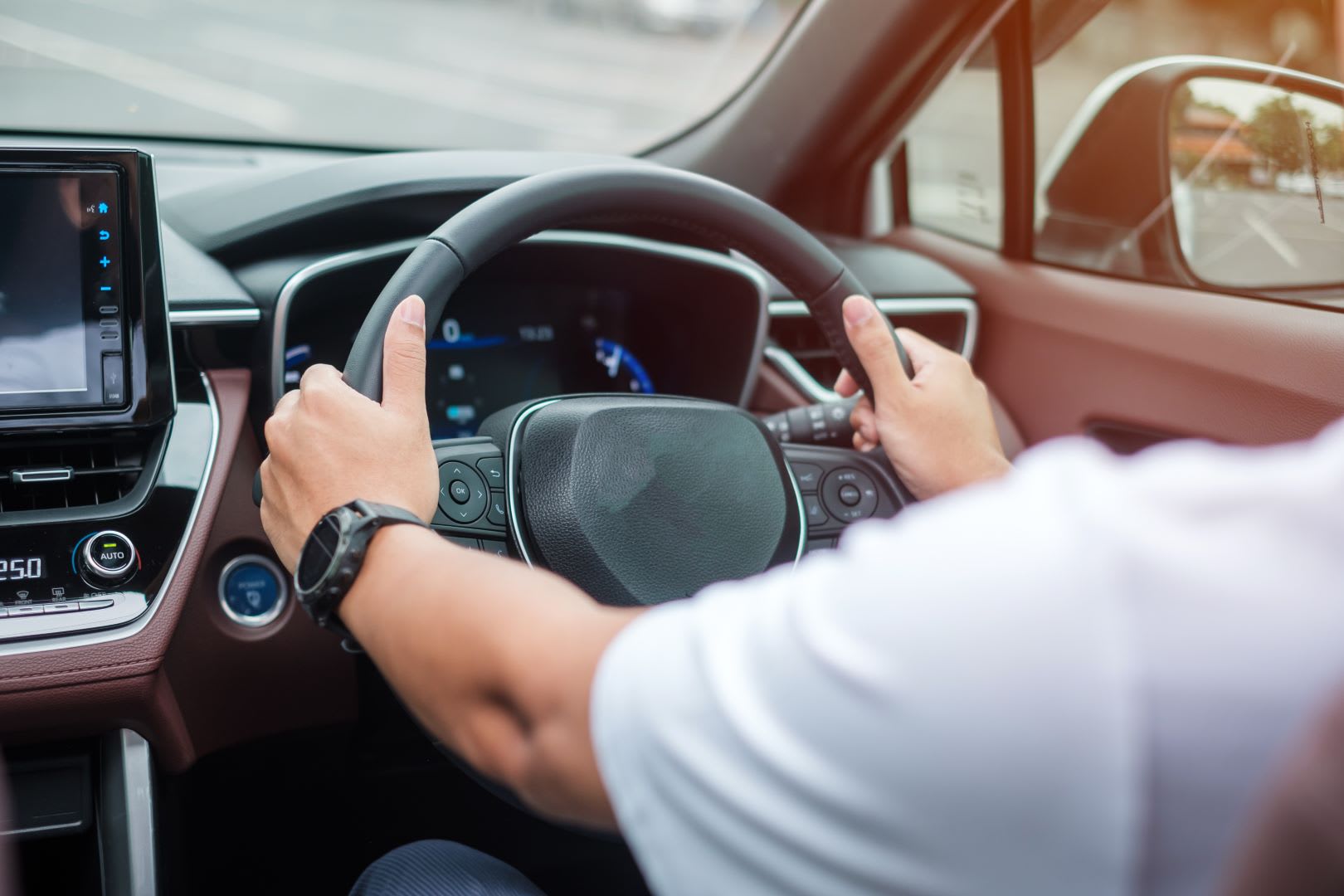8 Essential Safe Driving Skills Everyone Should Learn

Posted on July 30th, 2024.
One might think that driving safely is merely about following road rules and speed limits. While these are fundamental aspects, the reality of safe driving encompasses so much more. It's about mastering the art of anticipation, the ability to foresee potential hazards before they become real emergencies.
Picture this: you're cruising along a highway, and suddenly, the vehicle ahead of you abruptly switches lanes. A seasoned, defensive driver wouldn’t be astonished by such maneuvers. With an ingrained habit of maintaining a vigilant eye on the traffic dynamics around them, they're always a step ahead, ready to react with composure. This kind of preparedness is not just helpful—it’s lifesaving.
This blog post will explore several safe driving skills everyone should learn, providing tips for enhancing your safety and contributing to a more secure road environment.
Mastering Defensive Driving

Defensive driving is a cornerstone of safe driving skills that emphasizes staying vigilant, anticipating potential threats, and making decisions that keep you, your passengers, and other road users safe. At its core, defensive driving is about expecting the unexpected.
1. Maintain a Safe Following Distance
An imperative practice in defensive driving is maintaining a safe following distance. The rule of thumb is to stay at least three to four seconds behind the car in front of you. How do you measure this?
- Pick a stationary object like a sign and note when the vehicle ahead passes it.
- Then, count the seconds it takes you to reach the same point. If it's less than three seconds, you're too close.
- This cushion allows enough reaction time in case the car ahead stops abruptly.
Remember, tailgating not only raises the risk of a collision but also increases the stress levels for everyone involved. By keeping that buffer, you maintain control of the situation.
2. Anticipate Potential Hazards
Another key element of defensive driving is anticipation. Think of it from a what-if perspective. What if the car ahead of you suddenly brakes? What if a pedestrian steps off the curb? By proactively scanning for hazards such as erratic drivers, cyclists, or pedestrians, and being prepared to slow down or stop abruptly, you can avoid accidents before they happen.
One effective exercise is to mentally narrate your drive, commenting on potential hazards. This not only keeps you engaged but also sharpens your predictive skills. Practicing these techniques consistently can turn cautious driving into second nature and keep you and everyone around you safer on the roads.
Managing Road Rage – Keeping Your Cool
Managing road rage is another crucial aspect of maintaining safe driving practices. Road rage can occur when drivers become angry or stressed, leading to aggressive behavior like tailgating, honking excessively, or even attempting to force another vehicle off the road. Such actions not only endanger you and those around you but also escalate into potentially violent confrontations.
3. Drive Respectfully
It’s essential to remember that driving is not just about getting from point A to point B; it's about doing so safely and respectfully. Have you ever found yourself clenching the steering wheel in frustration? It’s a common response, but recognizing this as a sign to take a deep breath is the first step to managing it effectively.
4. Develop Calming Strategies
The subsequent step in managing road rage involves actively engaging in calming strategies.
- Firstly, ensure you get enough rest; fatigue can easily turn minor annoyances into major irritations.
- Additionally, play soothing music or an engaging podcast to keep your mind off the other drivers' actions.
- When another driver is aggressive or inconsiderate, avoid eye contact and refrain from making gestures. Isn’t it better to simply let them go ahead rather than provoke a confrontation?
- Another practical road safety tip is to pull over safely if you find yourself too upset to drive properly. By taking a few moments to calm down, you not only ensure your own safety but also set a positive example for others.
Navigating Adverse Weather: Rain, Snow, and Fog
Now, let’s focus on navigating adverse weather conditions—scenarios that often test even the most seasoned drivers.

5. Drive Safely in the Rain
Driving in the rain, for example, significantly reduces visibility and increases stopping distances.
- One of the key road safety tips for rainy conditions is to reduce your speed. Wet roads diminish tire traction, making it harder for you to control your vehicle and stop in time to avoid obstacles.
- Hydroplaning—when your tires lose contact with the road and glide on the water’s surface—can also pose a significant risk. If you ever feel your vehicle starting to hydroplane, the best course of action is to remain calm, ease off the accelerator, and steer in the direction you want to go.
- Another essential practice is to use your headlights appropriately, not only to improve your own visibility but also to make your vehicle more noticeable to other drivers.
- Don’t forget to regularly check your windshield wipers to ensure they’re in good condition; clear visibility is crucial.
6. Take Extra Precautions When Driving in the Snow
When it comes to driving in the snow, the stakes can feel even higher. Snow significantly impacts tire traction and your vehicle’s ability to stop effectively.
- One fundamental tip is to accelerate and decelerate gradually. This controlled approach helps maintain tire traction and reduces the chances of skidding.
- If your vehicle starts to skid, take your foot off the accelerator and steer in the direction you want the front of your vehicle to go. Never slam on the brakes, as this can exacerbate the skid.
- Utilizing lower gears can also provide better control over your vehicle, especially when navigating hills or inclines.
- For optimal safety, maintain a greater following distance—five to six seconds is advisable—ensuring you have ample time to react to sudden changes on the icy roads.
- Regularly check your tires for adequate tread depth, and if you reside in a particularly snowy area, consider investing in snow tires or chains for better traction.
7. Ensure Visibility When Driving in the Fog
Driving in the fog presents another unique set of challenges, mainly due to severely limited visibility:
- In these conditions, reducing your speed is crucial, as fog can obscure obstacles and other vehicles until the last moment.
- Make use of your fog lights, if your vehicle has them, or switch to low beam headlights. High beams can reflect off the fog and impair your visibility even further.
- Another pivotal road safety tip for foggy conditions is to use the right side of the road as a guide, specifically the white line marking the edge; this helps ensure you stay in your lane.
- Keep your windshield and windows clean to maximize visibility from within the vehicle.
- Since stopping sight distances are reduced in fog, maintaining a greater following distance is imperative.
- Stay alert for potential hazards, using your ears as much as your eyes.
The Critical Role of Seat-Belt Safety
 According to the National Highway Traffic Safety Administration (NHTSA), seat belts reduce the risk of death by 45% for front-seat passenger car occupants and by 60% for light-truck occupants. Yet, despite the compelling evidence, there are still individuals who neglect this essential safety measure.
According to the National Highway Traffic Safety Administration (NHTSA), seat belts reduce the risk of death by 45% for front-seat passenger car occupants and by 60% for light-truck occupants. Yet, despite the compelling evidence, there are still individuals who neglect this essential safety measure.
8. Use Your Seat-Belt Correctly
In the event of a collision, your seat belt acts as your first line of defense. It prevents you from being thrown from the vehicle, which is statistically one of the most fatal outcomes in accidents.
Proper seat-belt usage is more than just clicking the buckle:
- Ensure that the lap belt lies snugly across your hips, not your stomach, to maximize protection.
- The shoulder belt should rest comfortably across your chest and shoulder, not cutting into your neck or face.
- For pregnant women, it is advisable to wear the lap portion of the belt as low as possible under the abdomen, ensuring both personal and fetal safety.
Related: The Cost of Unsafe Driving Behavior: Impact on Your Business and Brand
Final Words
Transitioning your approach from reactive to proactive driving not only ensures your safety but also sets a high standard for road etiquette. Defensive driving, as we’ve discussed, is a mindset that cultivates awareness and preparedness, transforming any journey into a safer experience. But it's not just about theory; practical training is equally vital.
At Quest Safety Training, we emphasize real-life scenarios and interactive exercises that hone your decision-making skills under various conditions. Whether it's regularly maintaining a safe following distance or mastering road rage management techniques, these habits can significantly diminish the likelihood of accidents.
Curious to integrate these skills into your daily driving routine? You might want to check out our Defensive Driver Training course designed to equip you with lifelong safe driving skills.
Ready to take your first step towards becoming a safer and more responsible driver? Get in Touch Now!
For more details on enrollment, don’t hesitate to reach out at [email protected].
Contact
Get in Touch
We're here to help you on your journey to safety. Have questions or need more information about our training programs? Reach out to Quest Safety Training – where safety meets expertise!
